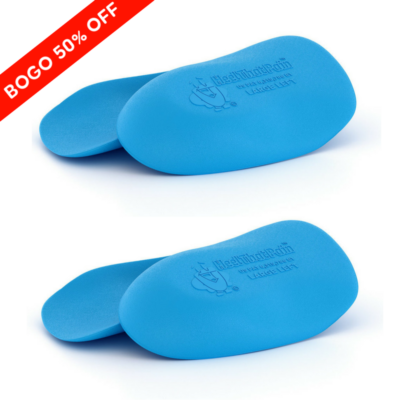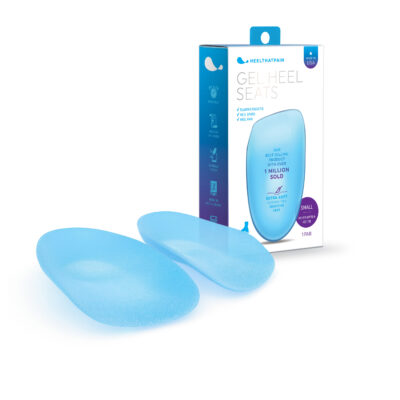Top Treatments for Heel Bone Spurs
Heel bone spurs are calcium deposits that build up on the bottom or side of the heel bone. These spurs can be either sharp or rounded, and can develop as a result of foot injuries, arch damage, friction from ill-fitting shoes, problems with calcium absorption, or even genetics.
Heel spurs that dig into the sensitive fat pad on the heel can cause severe and even debilitating pain in some cases. Thankfully, conservative treatments are usually very effective at treating these ill-positioned calcium deposits.
Home Remedies for Heel Bone Spurs
If you’re experiencing telltale symptoms of a heel spur, like a “pins and needles” stabbing sensation on the bottom of your heel bone, pain that gets worse after periods of rest (especially in the morning), difficulty putting weight on your feet, or redness and swelling, it’s important to take action sooner rather than later.
With prompt attention, most heel spurs can be treated easily at home using the following remedies:
 Orthotic Inserts
Orthotic Inserts
In the case of painful heel spurs, the goal is to relieve pain quickly while taking pressure off the tender tissues that the heel bone spur is aggravating so it can heal. That’s why orthotic inserts are usually the first line of defense to treat painful heel bone spurs.
A cupped orthotic design with Fascia-Bar Technology is most effective, stabilizing the heel to reduce sliding and friction while you walk, lifting the arch of the foot to relieve pressure on the heel spur itself, and cushioning the damaged fat pad of the heel while it heals. For most people, even severe pain from heel bone spurs improves dramatically with the right pair of orthotics.
Supportive Shoes
It’s critical to address the underlying reason the heel spur developed in the first place, to avoid recurring issues. In many cases, heel spurs may develop because of ill-fitting, unsupportive shoes. Switching to more supportive shoes is key to preventing chronic heel spurs.
Choose footwear that fits properly (no pinching in the toe box, and no rubbing at the back of the heel while you walk) has a thick, flexible sole for maximum impact absorption, and offers arch support. Shoes that rub, chafe, slide around, pinch, or provide little in the way of shock absorption leave feet vulnerable to strain and injury from everyday activities. Worn or poorly fitting footwear can also create gait problems over time as your body tries to avoid pain and irritation caused by the shoes while walking or moving.
Rest and Icing
Heel spurs are simply deposits of calcium on the heel bone and have no feeling The pain you may feel while walking or standing is caused when the heel spur pokes into the fat pad of the heel or the tissues of the foot. That’s why icing the foot and resting can go a long way to relieving the pain of heel bone spurs.
Take breaks from long periods of standing, give yourself enough time to recover from sports or exercise sessions, and avoid walking barefoot on hard surfaces whenever possible.
Icing can be used to relieve swelling, inflammation, and redness caused by heel bone spurs. Apply ice for 10-15 minutes, twice a day, using an ice pack or Ice Therapy Slippers for quick, temporary relief.
Enzymatic Therapy
Some people have had success with enzymatic therapy for heel spurs, although unlike the other home remedies above, there isn’t much evidence to support these claims. Herbal enzymatic supplements like Acid-A-Cal help the body absorb calcium more easily and regulate body pH. If your heel spurs are caused by poor calcium absorption, these supplements (along with supplements like silica and magnesium) might help you strengthen your bones and avoid heel spurs.
Heel Spur Treatments for Resistant Cases
While 90% of painful heel spur cases can be resolved with conservative treatments, sometimes stubborn cases of heel spurs will require surgery. If your pain does not improve after a few months of consistent conservative treatments, talk to your doctor about surgery to remove the heel bone spurs.
Surgery to Remove Heel Spurs
Most of the time, surgery to remove a heel bone spur is done in conjunction with plantar fascia release surgery. While surgery has a high success rate, most podiatrists recommend it as a last resort because of its expense and downtime.






